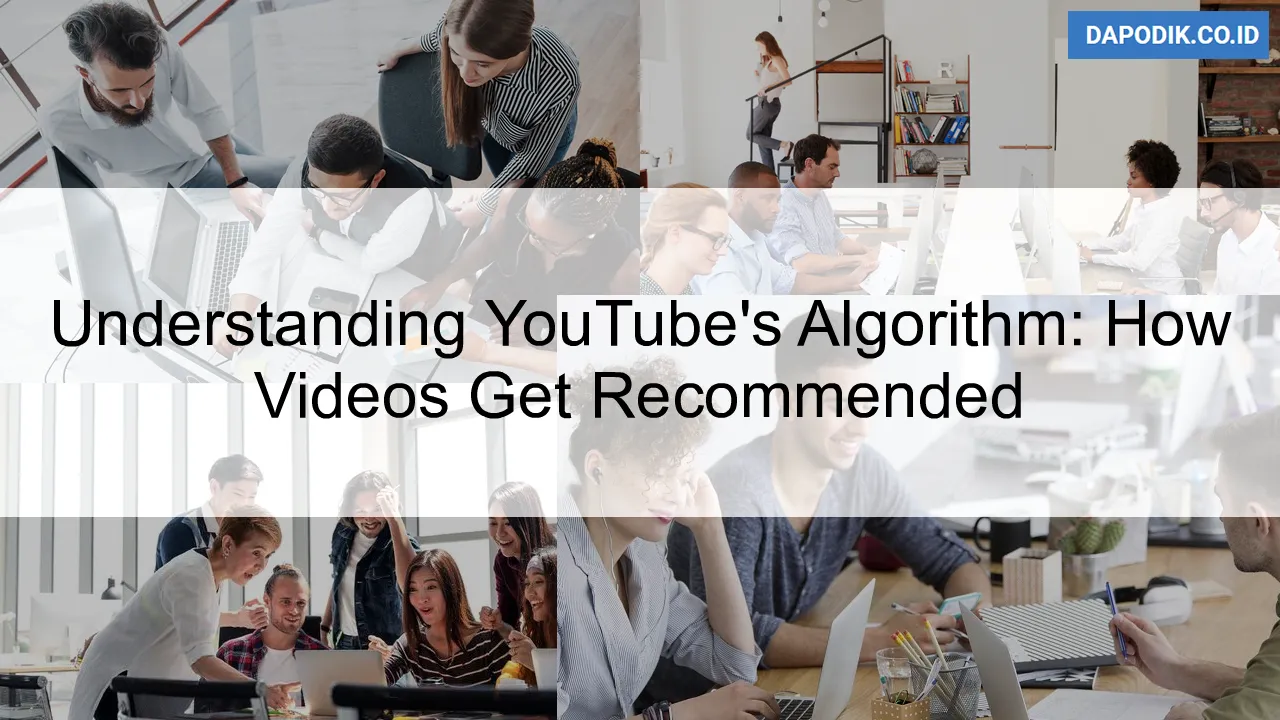Understanding YouTube’s Algorithm: How Videos Get Recommended
The Role of Watch Time in Video Recommendations
In the vast landscape of online videos, YouTube’s algorithm plays a crucial role in determining which videos get recommended to users. One major factor that influences this algorithm is watch time.
Watch time refers to the amount of time users spend watching a particular video. It is an essential metric that helps YouTube understand the value and relevance of a video to its audience. The longer users stay engaged with a video, the more YouTube sees it as providing valuable content.
YouTube’s algorithm takes into account watch time when making recommendations to users. Videos with high watch time are more likely to be suggested to other viewers who have similar interests or have watched related content in the past.
High watch time indicates that a video is engaging, informative, and resonates well with its target audience. As a result, creators who consistently produce videos with high watch time are rewarded by YouTube’s algorithm, as their content is more likely to reach a larger audience through recommendations.
On the other hand, videos with low watch time are less likely to be recommended to users by YouTube. This emphasizes the importance for creators to focus on creating engaging and captivating content that captures the attention of viewers from the start.
Understanding watch time is crucial for content creators aiming to maximize their reach on YouTube. By producing videos that are both captivating and valuable to viewers, creators can increase their watch time, which will ultimately improve their chances of getting recommended to a wider audience.
The Impact of User Engagement on Video Recommendations
In recent years, the way we consume and engage with online video content has drastically changed, with platforms like YouTube becoming a major source of entertainment and information. Behind the scenes, YouTube’s algorithm plays a crucial role in determining which videos are recommended to users. Understanding how this algorithm works can help content creators harness its power and increase their chances of reaching a wider audience.
One key factor that influences YouTube’s video recommendations is user engagement. When users watch, like, share, and comment on videos, they provide valuable signals to the algorithm, indicating their preferences and interests. These signals help YouTube determine which videos are more likely to resonate with users, and thus, get recommended to similar viewers. The more engagement a video receives, the higher the chances of it being suggested to a larger audience.
Additionally, the duration of user engagement also plays a significant role. YouTube’s algorithm takes into account the average watch time of a video and prioritizes those that hold viewers’ attention for a longer period. This means that videos with higher watch time are more likely to be recommended, as they are deemed more interesting and valuable to users.
Moreover, user engagement extends beyond individual videos. YouTube considers the viewing history and behavior of each user to personalize recommendations. The algorithm takes into account the types of videos users have engaged with in the past, creating a unique profile for each viewer. Based on this profile, YouTube suggests videos that align with the user’s interests and preferences, enhancing the overall viewing experience.
In conclusion, user engagement has a profound impact on video recommendations on YouTube. By actively engaging with videos through likes, shares, comments, and longer watch times, users can influence the algorithm to recommend similar content to a broader audience. This symbiotic relationship between users and the algorithm creates a dynamic ecosystem, enabling both content creators and viewers to benefit from a more personalized and tailored content discovery experience.
The Importance of Video Metadata in the Algorithm
In the world of YouTube, understanding the algorithm is crucial for creators to maximize their video reach and engagement. One important factor that significantly impacts how videos get recommended is video metadata.
Video metadata refers to the information that describes a video, including its title, tags, description, and thumbnail. It provides YouTube’s algorithm with vital information about the content, helping it understand and classify videos.
Firstly, the video title plays a pivotal role in attracting viewers’ attention. It should be concise, descriptive, and include relevant keywords to improve searchability. A clear and compelling title can make a significant difference in whether a video gets recommended or not.
Secondly, tags also play a crucial role in video discovery. They act as keywords that inform the algorithm about the video’s topic and content. Including specific and relevant tags improves the video’s chances of being recommended to viewers interested in similar content.
Moreover, the video description provides further context about the video’s content. It should be detailed and include relevant keywords to enhance searchability. A well-written description can capture viewers’ interest and encourage them to watch the video.
Last but not least, the thumbnail is the visual representation of a video that appears in search results and recommendations. An eye-catching and relevant thumbnail can significantly impact click-through rates and improve a video’s chances of getting recommended.
In conclusion, video metadata, including the title, tags, description, and thumbnail, plays a vital role in YouTube’s algorithm. Optimizing these elements not only helps in better search visibility but also increases the chances of videos being recommended to a wider audience.
Conclusion
Understanding YouTube’s algorithm is crucial for creators aiming to maximize their video’s reach. By considering factors like watch time, video engagement, and relevancy, creators can increase their chances of getting recommended by YouTube. Consistently producing high-quality content, optimizing titles and descriptions, and staying up to date with algorithm changes are key strategies to capitalize on the platform’s recommendation system.
